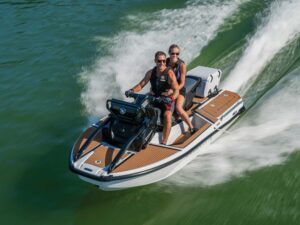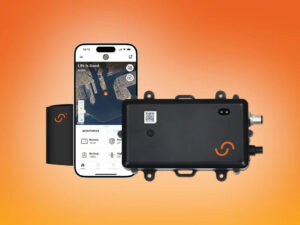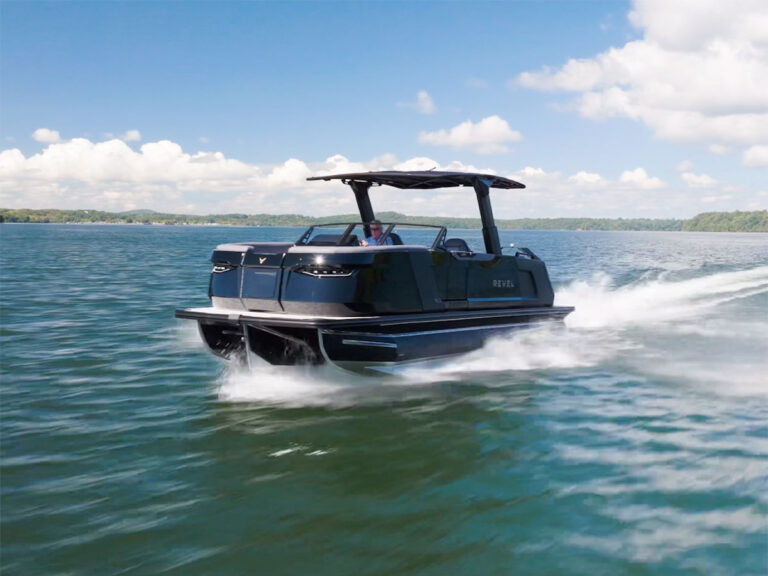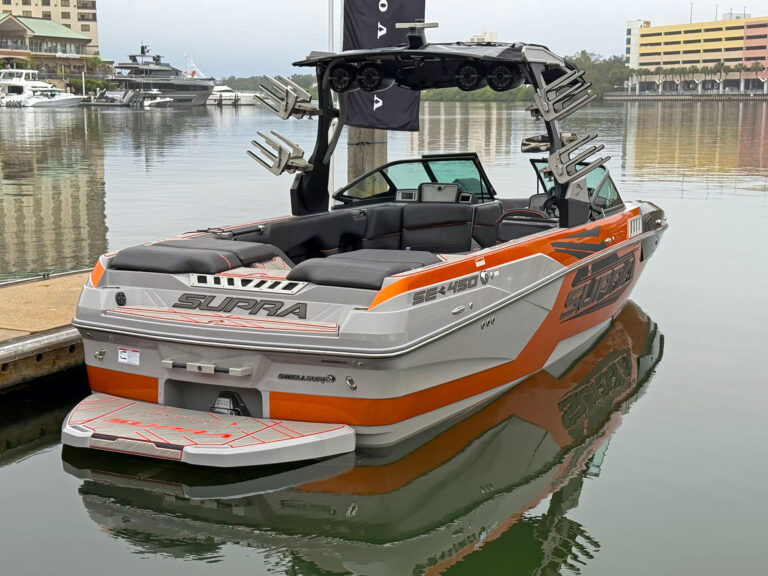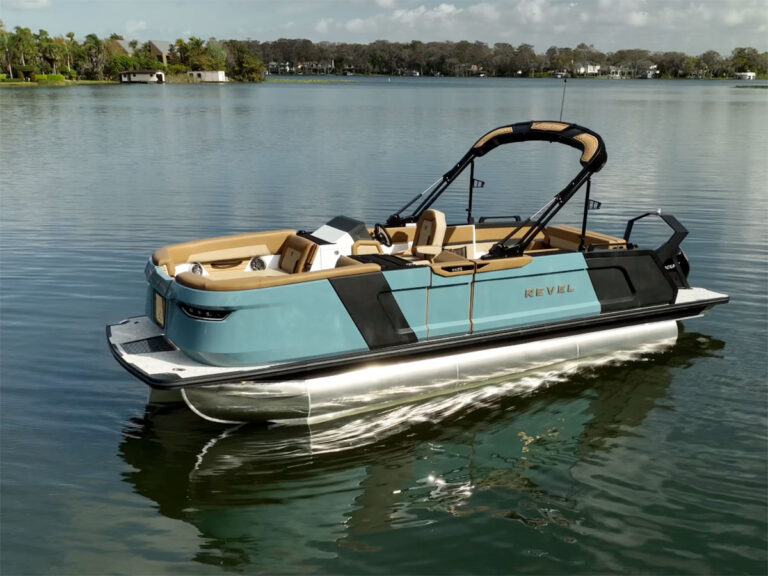
The age of electric vehicles (EVs) has arrived. As the world seeks solutions to climate change, replacing internal-combustion vehicles with EVs has emerged as one strategy for reducing greenhouse gas emissions.
In fact, in California where I live, Gov. Gavin Newsom signed an executive order (backed by a ruling by the California Air Resources Board) requiring 100 percent of new-car sales to be zero-emission vehicles by 2035.
Other states such as New York, New Jersey, Oregon and Washington tend to follow California emissions mandates, so some of those states will likely adopt similar rules in the future.
The onset of EVs looms large for a huge population of skippers who need capable vehicles to tow boats on trailers. While there’s no firm data on the number of trailer boats, the National Marine Manufacturers Association reports that 95 percent of US boats are less than 26 feet in length and can be trailered by a vehicle to local waterways. That means the vast majority of today’s craft are carried on trailers.
To find out how this majority will fare in the future, we decided to tow-test one of today’s most powerful electric trucks—a 2022 Ford F-150 Lightning—and pit it against a traditional gasoline-powered F-150. What we learned might help guide your next vehicle-buying decision.
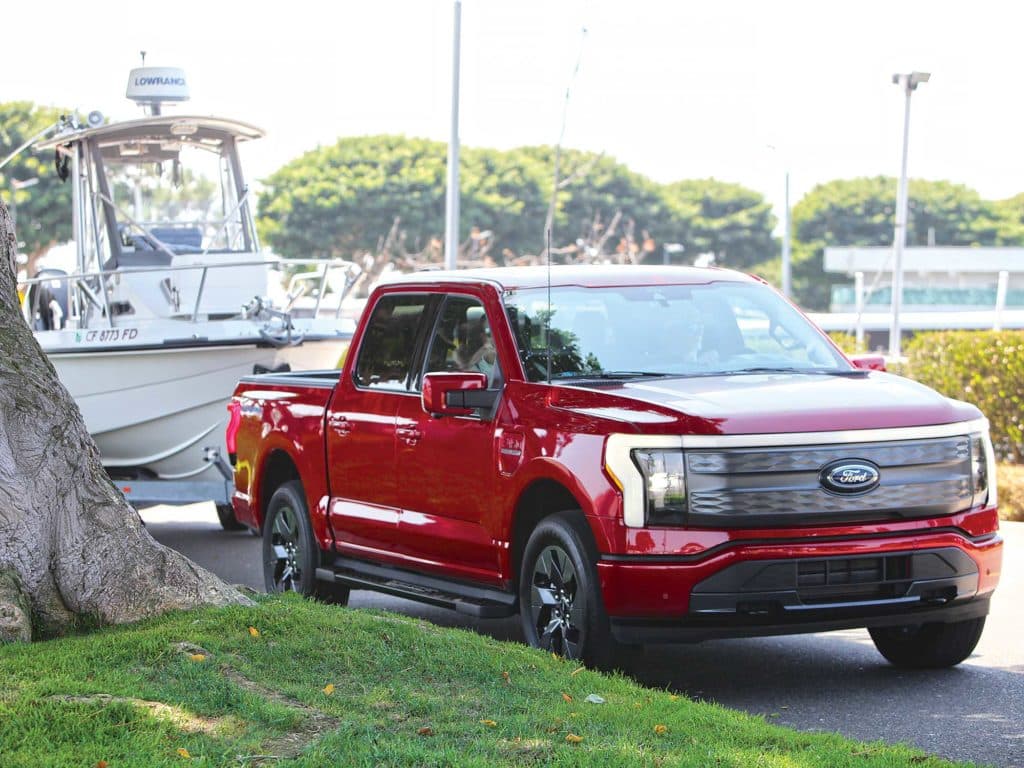
Contenders
There are more than 2.3 million electric vehicles in the US today, but few possess the power of the Ford F-150 Lightning SuperCrew ($81,124 total suggested retail as delivered). The version we tested punched out 580 hp and 775 pound-feet of torque, and came with four-wheel drive and the Max Trailer Tow Package rated at 10,000 pounds with the optional extended-range battery pack. Among EVs now on the market, this rating is exceeded only by the Rivian R1T electric pickup, which boasts an 11,000-pound towing capacity.
Our comparison truck was a 2020 Ford F-150 SuperCrew two-wheel drive STX ($37,655 total suggested retail new at the time of sale) powered by a gasoline-fueled, state-of-the-art twin-turbocharged 2.7-liter EcoBoost V-6 producing 325 hp and 400 pound-feet of torque delivered through a 10-speed transmission and 3.55-to-1 axle ratio. Towing capacity tops out at 7,800 pounds with the Ford towing package. For a new four-wheel-drive F-150 SuperCrew with the 2.7 EcoBoost and a towing package today, plan on a minimum retail price of around $46,000.
| Chevy Silverado EV (Not on the market as of press time) | 10,000 |
| Ford F-150 Lightning | 10,000 |
| GMC Hummer EV (Not on the market as of press time) | 7,500 |
| Ram 1500 EV (Not on the market as of press time) | 10,000+ |
| Rivian R1T | 11,000 |
| Tesla Cybertruck (Not on the market as of press time) | 14,000 |
Both vehicles’ design offers a combination of efficiency and towing capabilities. The conventional F-150 achieves efficiency with Eco mode to maximize miles per gallon in normal driving; towing prowess is achieved with Tow/Haul mode to keep the engine revving in its power band while pulling a heavy load.
The Lightning provides high efficiency in nontowing situations through its standard electric driving mode, while the Tow/Haul mode ramps up the delivery of kilowatts to ensure plenty of power when pulling a boat.

Methodology
To create an even playing field, we used the same trailer boat for both trucks. It was a 21 ½-foot center-console with a T-top, a 200 hp Suzuki outboard, and approximately 50 gallons of gasoline. It sat on a galvanized-steel tandem-axle trailer with a conventional weight-bearing hitch and two-wheel hydraulic surge disc brakes. The gross vehicle weight tipped the scales at 6,800 pounds.
We towed the rigs on the same 42-mile loop on relatively flat terrain that included 70 percent freeway driving and 30 percent city streets. On the freeway, we kept the speed at 60 mph and maintained posted speeds elsewhere. We did not use the air conditioning on the outbound leg of each trip but did turn it on during the return leg, theorizing that many trailer boaters might not use the AC in the early morning hours when heading to the ramp but would be inclined to stay cool on the afternoon drive back home.
Some trailer boaters might wonder: Why not drive a longer route that also included mountain grades? We’ll address this question later in the story when we discuss towing range.

Power
There’s no question as to which vehicle wins in the power category. It’s the Lightning. It delivers pin-you-in-your-seat acceleration. We recorded a zero-to-60 time of 4 seconds without a trailer and 11 seconds with a boat in tow (some of that time gobbled up with tire spin). This is due to the instant torque delivery of the electric system. No need to build rpm—power is immediate. By comparison, the STX recorded a 6-second zero-to-60-mph nontowing time and took 14 seconds to reach 60 mph while towing a boat, significantly slower than the EV.
Perhaps a more practical application is midrange acceleration, especially while towing when you want to pass another vehicle. Stab the throttle of the Lightning and it jumps from 60 to 70 mph in less than 2 seconds while towing. The STX takes more than 6 seconds to build rpm and reach 70 while towing. Again, the immediate availability of torque in the electric Lightning wins the contest.
Stability
I’m used to the solid rear axle in a truck such as the STX for towing, so the gas-powered pickup felt more stable to me than the independent four-wheel suspension of the Lightning. With the electric vehicle, the trailer boat tended to induce more side-to-side wag than with the STX, especially when cornering and on uneven surfaces.
In a word, the Lightning felt squishy. That said, I did not feel unsafe while towing with the Lightning, and both trucks adeptly handled the tongue weight of the trailer without any rear-end sag or front-end lift. Both towed level at all times. The towing sensation with the Lightning might just take some getting used to. With this in mind, I’ll call it a draw.

Comfort
There’s a big difference in the appointment levels between the two trucks. While certainly not lacking in comfort, the STX eschews many of the luxury touches found on the Lightning, such as electrically adjustable and ventilated front seats, a 12-inch productivity screen, an auto-dim rearview mirror, keyless entry, power-adjustable pedals, an electrically operated rear window and more.
In short, the Lightning exudes luxury. But the same kinds of comforts are available in Ford’s gas-powered F-150s, such as the luxury King Ranch SuperCrew edition, which carries a suggested retail of nearly $84,000 new. With this in mind, we’ll call this particular comparison a draw.
Technology
Even putting aside the amazing technology behind the electric power system, the Lightning wins with features such as a 360-degree exterior camera system with a forward- and rear-sensing system, cross-traffic alert to warn of cars in your blind spot, selectable drive modes, evasive steering input, a hotspot modem, Smart Hitch to calculate tongue weight, and Pro-Trailer Assist that automatically steers the rig in reverse when backing a trailer.
However, the STX was not without high-tech attributes of its own, including selectable driving modes such as Tow/Haul and Eco, as well as Pre-Collision Assist to activate the ABS brakes in a potential collision situation, and rear-facing cameras and sensors for backing up and providing a visual when hitching up a trailer.
Ultimately, the Lightning wins the tech race.

Ramp Performance
The four-wheel drive of the Lightning promises greater traction versus the two-wheel-drive STX on wet launch ramps, though gas-powered F-150s are also available in four-wheel drive. Both vehicles had electronic-locking differentials to enhance traction on slippery pavement.
A question arises among trailer boaters about the safety of backing an electric vehicle into the water at the ramp. According to Ford, there is no greater safety concern in these situations than with a gas-powered vehicle. Both types of trucks are rated to operate in water depths up to 24 inches. “That’s pretty deep,” says Dapo Adewusi, Ford’s vehicle engineering manager for the Lightning.
Two feet of water submerges the height of the truck tires about 75 percent. The Lightning’s battery pack, which resides in the undercarriage below the cab, is sealed and can be submerged, Adewusi says. There are also full-length steel skid plates to protect the battery. By way of comparison, the Rivian R1T electric pickup advertises a maximum “wading depth” of 3-plus feet.
Based on the Lightning’s sheer power, it gets the nod in ramp performance.

Cost of Towing
With the price of gasoline these days, you might think this category is a no-brainer, but the cost of electrified towing is not as clear-cut as you might imagine. For instance, during my tow test in late summer, gasoline was selling for $4.80 per gallon, while the national cost of power from Electrify America was $0.43 per kilowatt-hour at its 150-watt Level 3 charging stations. The Lightning averaged 1 mile per kWh while towing, resulting in an electrical cost of $18.06 for the 42-mile loop. The STX averaged 9.9 mpg, resulting in a fuel cost of $20.36 for the loop—an 11.3 percent difference in favor of the Lightning.
Keep in mind that California has some highest gas prices in the country. But if you use the national average of $3.85 per gallon at the time of this writing, the cost of gas for the loop shrinks to $16.33—a 9.6 percent swing in favor of the STX. So, who wins? Read on.
At-Home Solution
In reality, Level 3 charging stations are not appropriate for everyday charging. Those kilowatts are expensive, and extensive use of fast changing can shorten battery life. So, most EV owners use them primarily for recharging while on a road trip.
You can accrue savings and extend battery life by using a Level 2 home charging station, which requires a 240V circuit. Estimates for installation range between $500 and $800, assuming you already have an available 240V service installed. Providing as much as 7.6 kW of power, a Level 2 charger is much faster than a Level 1 that uses a 120V household outlet.
With a home charger, you pay a residential electricity rate that’s a fraction of a charging station. The national average at the time of this writing was around $0.14 per kWh, which translates to an electrical cost of $5.88 for the 42-mile loop—a 72 percent savings in favor of the Lightning based on the national average cost for a gallon of gasoline. So, when it comes to the least expensive way to tow, the Lightning wins, but only after you pony up for a Level 2 home charging station.
Maintenance
How does maintenance differ for the Lightning versus a gas F-150? “If anything, there’s less maintenance,” says Dapo Adewusi, Ford’s vehicle engineering manager for the Lightning. “The owner’s manual spells it all out, but essentially, you’re looking at intervals for changing the cabin carbon filter, doing the brakes, rotating the tires and servicing the air conditioning.”
What about replacing the battery pack? Adewusi was reluctant to say how long the battery will last or what a replacement would cost, but he did point out that Ford’s warranty states the battery is covered for eight years or 100,000 miles—whichever comes first—for retaining a minimum of 70 percent of its original capacity over that time period.
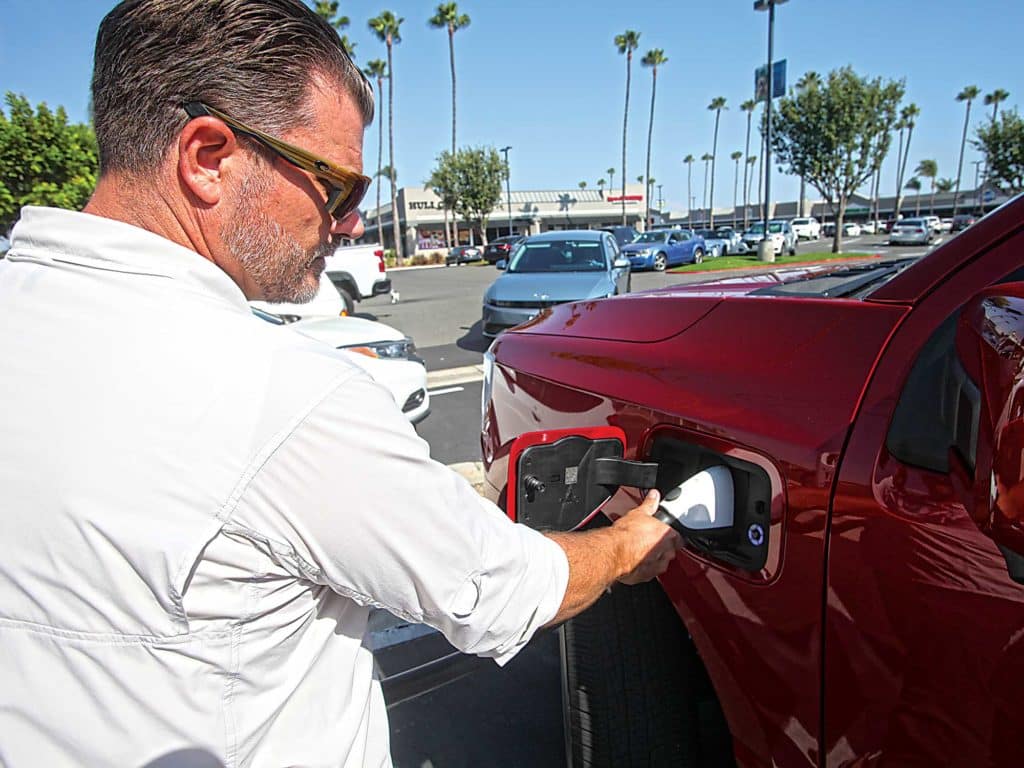
Range
Here comes the showstopper, the elephant in the room, the big question on the minds of most trailer boaters: How far can the Lightning tow?
Let’s jump to the answer: Range was about 90 miles with a nearly full charge based on our testing with the 6,800-pound boat and trailer. “The towing range in your testing is consistent with our testing of the F-150 Lightning,” says Ford’s Adewusi.
That’s a serious drop from the Lightning’s 305-mile nontowing range with a nearly full charge. It’s also a significantly lower than the 231-mile towing range of the STX based on 90 percent usable capacity of its 26-gallon fuel tank.
Therein lies our reason for not tow-testing on a longer loop or challenging any of California’s mountain passes, some of which sport grades of 6 percent. Range anxiety played into this decision. The prospect of searching frantically for a charging station while towing 3.5 tons of boat and trailer across the California desert or LA megalopolis and running low on kilowatts led us to keep the loop relatively short and level.
When it comes to range, the gas-powered F-150 pickup is the clear winner.
Which Is Best?
So, does the Lightning fit your trailer-boating needs? As with so many other questions in boating, the answer is: It depends. It depends on the required towing capacity—there might not be an electric truck rated to tow your boat. It depends on your willingness to pay extra for an electric vehicle. It depends on your comfort level with new technology.
But based on our testing, it depends mostly on how far you need to tow your boat. If you are happy with a maximum round-trip range of about 80 to 100 miles, depending on the gross vehicle weight and aerodynamics of your boat and trailer, an electric truck is worth considering. But if you’re an adventurous sort who likes to tow your boat far and wide, the electric truck as it currently exists is probably not for you.
According to our recent Instagram poll, an electric truck would likely meet the towing needs of most Boating readers who trailer their boats—73 percent tow less than 100 miles round trip for a day on the water. On the other hand, 27 percent of Boating readers tow more than 100 miles round trip when they head to the water. For these boaters, based on our tests, an electric truck might not be the most practical tow vehicle, at least for now.
Yet who knows what the future will hold? We can say with a high level of confidence that the advancing pace of battery technology will accelerate in the coming years, resulting in greater battery capacity than ever before. And as new technologies emerge, the towing range of electric trucks will most certainly grow.
Read Next: Luxury Towing With a Porsche Cayenne Turbo S

Range Calculations
How did we arrive at our range calculations while towing with the Lightning? The truck itself will initially estimate your towing range based on calibrations you plug into the onboard computer using the dash display. It will ask for parameters such as the towed weight, length and height of your trailer boat. It then reassesses range as you get on the road. Towing a few miles gives the Lightning a chance to acclimate to the speed, towed weight, payload, aerodynamics, battery state of charge, and other factors such as weather data, driving behavior and battery age. When towing conditions change—say, for example, you start to climb a mountain grade—the truck reestimates your range and alerts you via the onboard display.
Charging En Route
There are currently about 47,000 Level 3 charging stations with 115,000 charging ports in the US, according to the Department of Energy. About 22,000 of these EV stations have fast-charging capabilities.
If you worry about not finding a charging station on a long trip, the Lightning helps allay that anxiety. Like most EVs, it constantly monitors its state of change and range, and will notify you repeatedly via the onboard display when its electrical energy is dwindling and you need to recharge. It will also direct you to the nearest charging station with the appropriate plug.
That’s fine in nontowing situations. You can easily park the truck at a charging station to take on juice. But unlike gasoline or diesel filling stations, few chargers accommodate a vehicle with a trailer. In my travels, I have not seen any pull-through stations. Neither have I seen charging stations at any launch-ramp parking lots.
That might change in the future, but for now, it’s a hassle. You will likely have to unhitch your trailer boat in a nearby parking spot (don’t forget to chock the tires), then drive to the charging station and plug in. Once recharged, you can hitch up again and be on your way.



